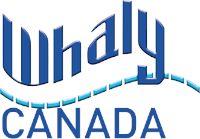European CE Certification Categories
In 1998 the European Union created a Recreational Craft Directive that established design standards for most recreational boats from 2.5 to 24 meters (8 to 79 feet). New and used boats sold in Europe, including boats built in the US – or anywhere else – for export to Europe, must be certified as complying with one of four design categories. The following four design categories help to quantify a boat’s degree of seaworthiness, based on the wave height and wind speed the boat is designed to encounter and
handle. The further offshore the vessel is expected to venture, the higher are the expectations for construction strength, stability, freeboard, reserve buoyancy, resistance to downflooding, deck drainage and other seaworthiness criteria.
• Category A – Ocean: covers largely self-sufficient boats designed for extended voyages with winds of over Beaufort Force 8 (over 40 knots), and significant wave heights above 13 feet, but excluding abnormal conditions such as hurricanes.
• Category B – Offshore: includes boats operating offshore with winds to 40 knots and significant seas to 13 feet.
• Category C – Inshore: is for boats operating in coastal waters and large bays and lakes with winds to Force 6, up to 27 knots, and significant seas 7 feet high.
• Category D – Inland or sheltered coastal waters: is for boats in small lakes and rivers with winds to Force 4 and significant wave heights to 18 inches.
